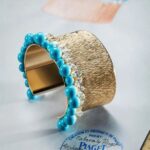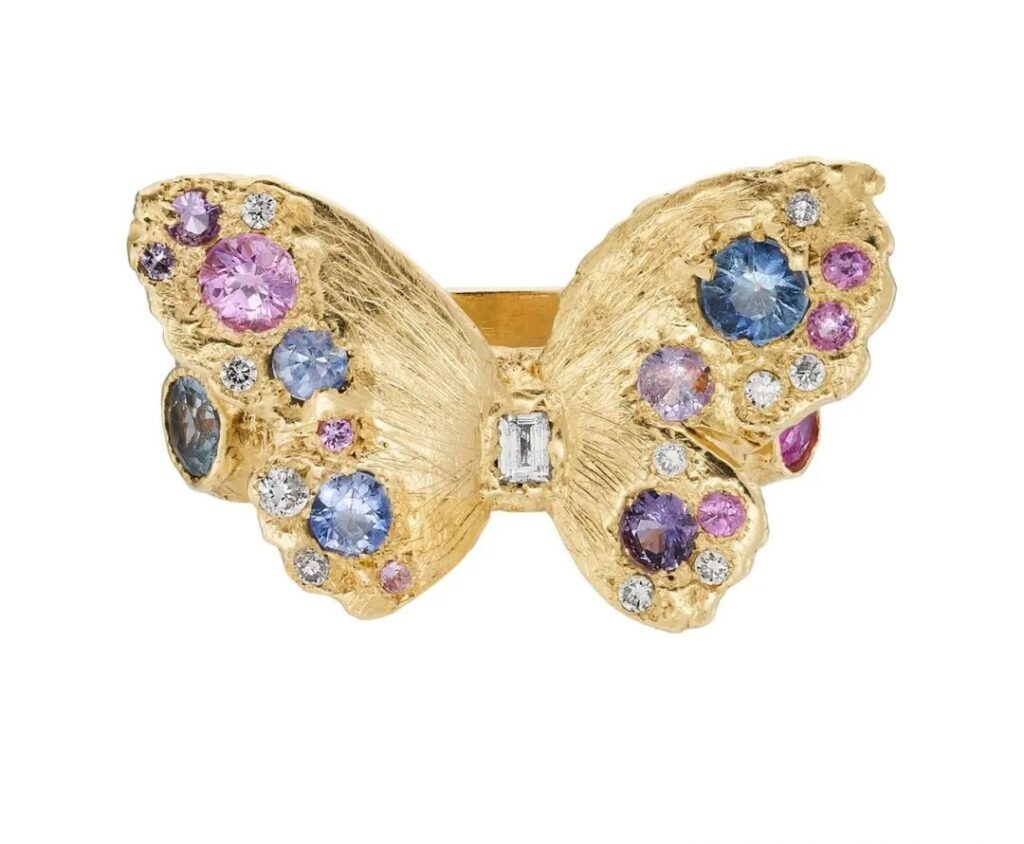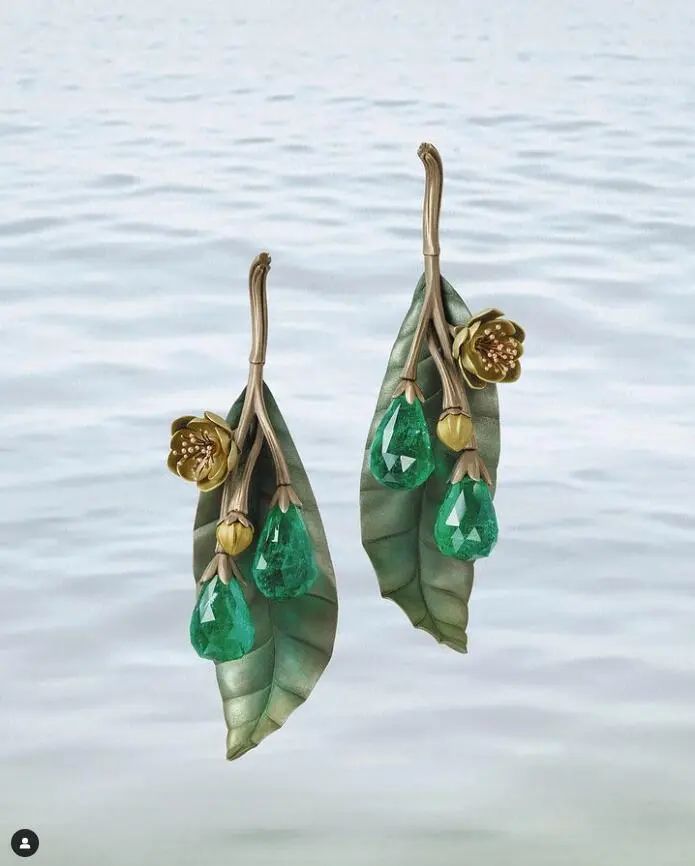
The exclusive and high-end TEFAF Maastricht (The European Fine Art Fair) opened its doors as scheduled in 2024. This event, which offers a close-up appreciation of artistic beauty, has always been a magnet for jewelry collectors.
Not only does it showcase exquisite and rare antique jewelry, but many brands like Boghossian, Hemmerle, and Otto Jakob, known for their unique craftsmanship, choose this platform to unveil their new creations. So, what are we waiting for? Let’s take a sneak peek with Bazhu Sister!
TEFAF Maastricht is held every March in the Netherlands and is considered one of the world’s largest and most prestigious international art fairs. Many masterpieces that you might only see in museums are potentially available for purchase here, making this exhibition, though niche, absolutely professional and high-end.
Its jewelry section is an annual must-see “stage” for seasoned collectors, especially those who love antique jewelry, as every piece showcased is a rare treasure.
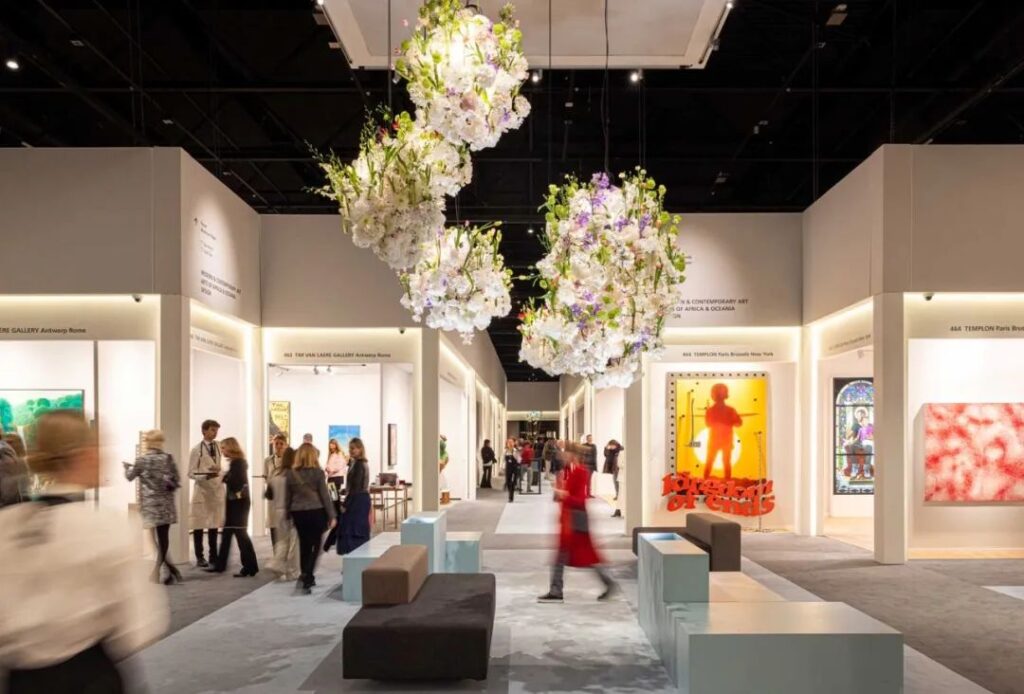
At this fair, antique jewelry dealers from around the world gather, bringing out their “crown jewels”. From their highlighted exhibits, we can glimpse the “popular trends” in antique jewelry this year. So, which era’s jewelry style is most favored in 2024?
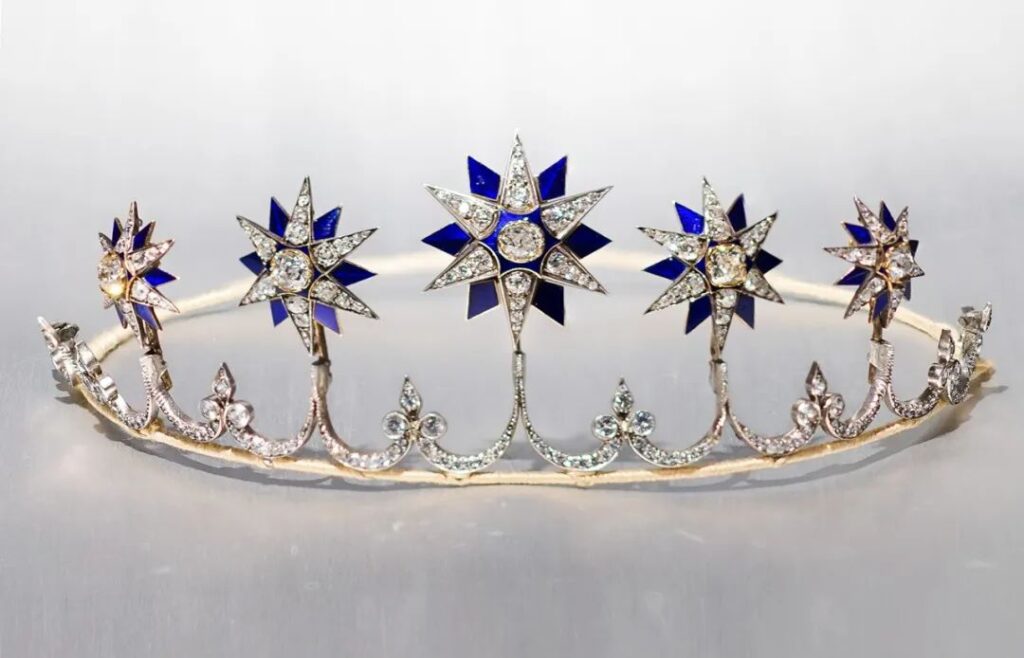
From the collection of A La Vieille Russie”
Art Nouveau Jewelry Steals the Spotlight
I always thought that Art Deco style jewelry had an advantage in blending with modern wardrobes, hence its enduring popularity.
However, for TEFAF attendees, pieces from the Art Nouveau movement, which embody artistic beauty and craftsmanship, seem to hold more collectible value. Therefore, many antique jewelry dealers have brought works from this period, characterized by artistic flair, poetic romance, and unique craftsmanship.
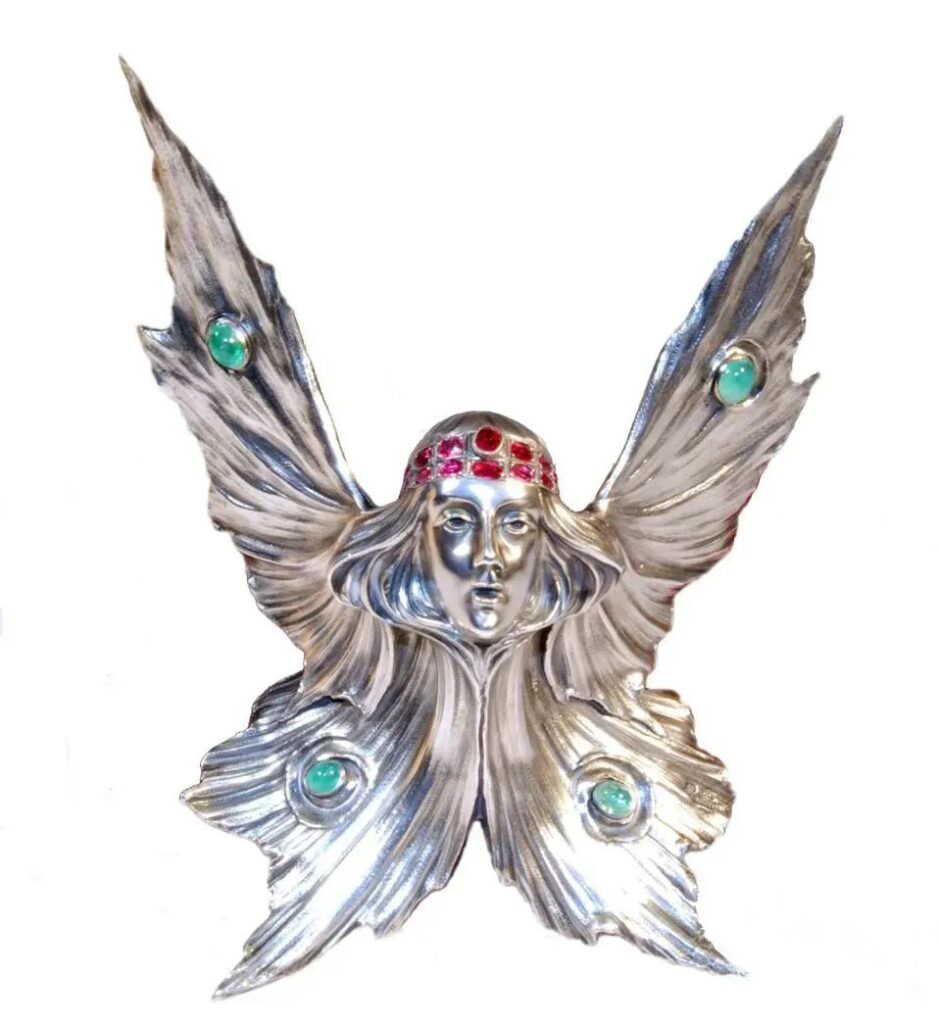
From the collection of A La Vieille Russie”
For instance, Simon Teakle, an antique jewelry dealer whose founder previously worked at Christie’s, accumulating considerable resources and experience in jewelry and antiques, has brought a “Cattleya” orchid brooch designed by the late 19th-century French jewelry company Le Turcq et Duval.
This vibrant, lifelike gemstone flower features matte and translucent enamel petals, with pavé diamond-set stamen and stem. Does this lifelike orchid remind you of the orchid brooches designed by Paulding Farnham for Tiffany & Co. back in the day?
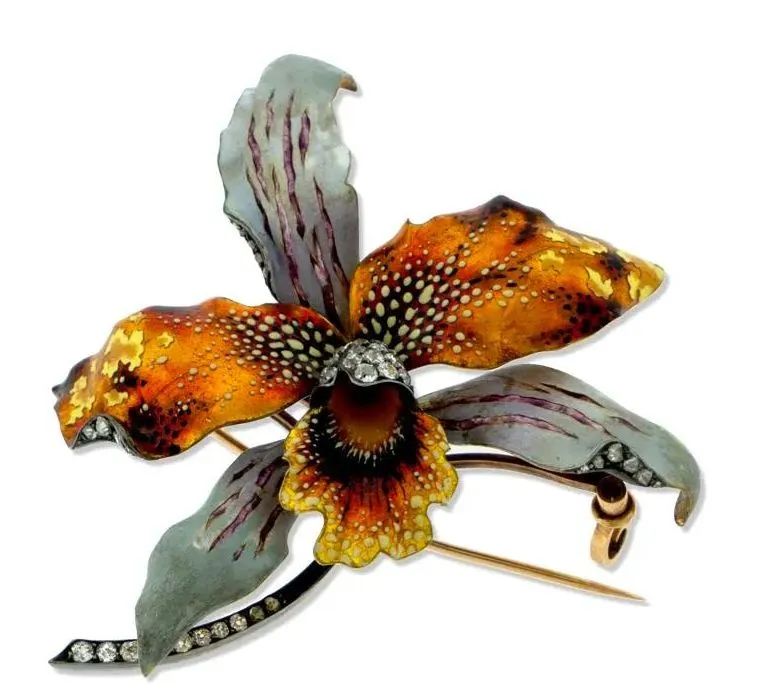
From the collection of Simon Teakle
This piece represents one of the early styles and themes of Art Nouveau. It’s likely that after Tiffany’s orchid brooch won top honors at the Paris World’s Fair, many brands produced similar works. And you know what? There were truly some exquisite pieces among them. The lifelike realism must have been all the rage in high society at the time. After all, who wouldn’t want to own an orchid that could be worn and never wilt?
London jeweler Wartski has brought an Art Nouveau necklace made by Marcus & Co., a brand you’ve probably heard of and considered one of the representatives of the Art Nouveau style. This necklace, made around 1906 to 1908, features a “fresh” aquamarine as the main stone, with delicate gold lines creating layers and decorated with enamel work, the most representative technique of Art Nouveau.
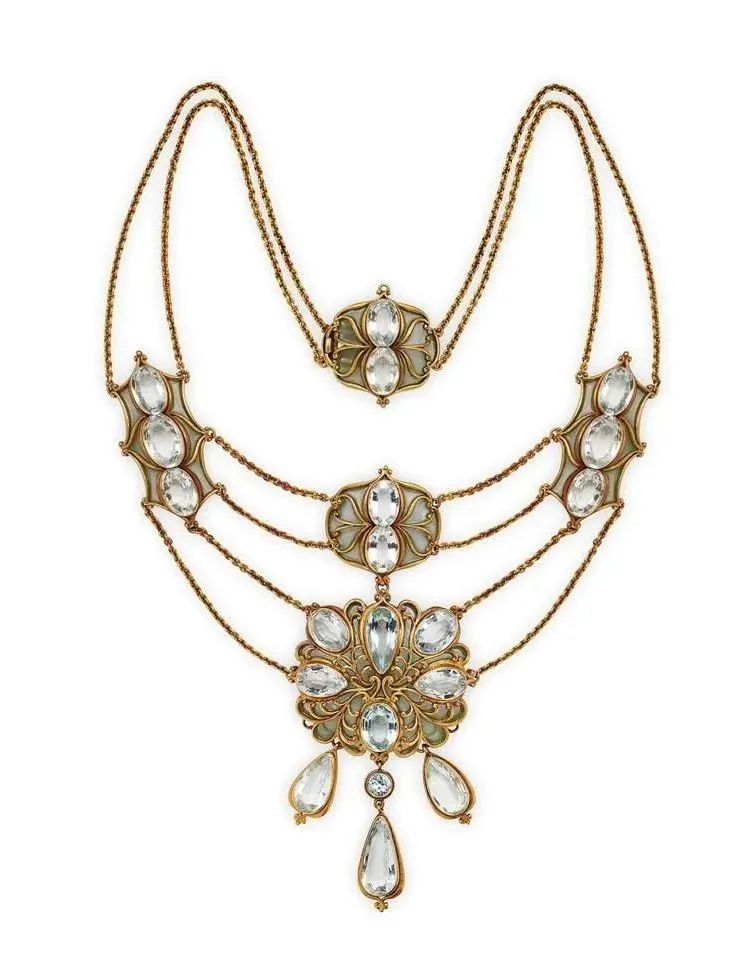
Gold, aquamarine, enamel
From the collection of Wartski
Belgian antique and period jewelry expert Epoque Fine Jewels has also brought some exciting pieces to this year’s TEFAF, including two extraordinary Art Nouveau works: a brooch designed by Marcel Bing, depicting a woman’s profile in soft ivory, her cloud-like golden hair crafted in 18K yellow gold, with opal and enamel forming her beautiful hair ornament. This piece is typical of Art Nouveau jewelry in both theme and materials.
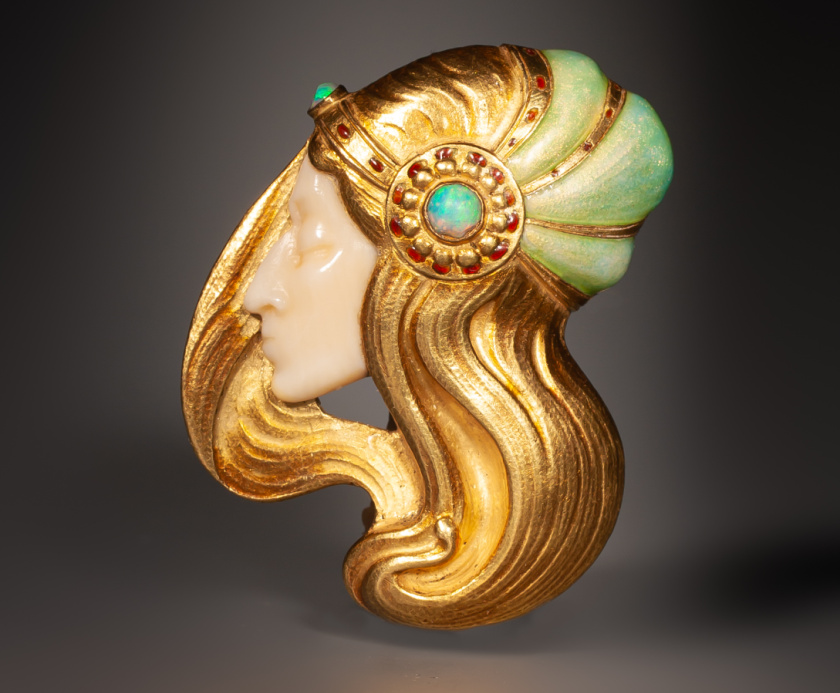
Ivory, opal, enamel
From the collection of Epoque Fine Jewels
Another piece is the Nymph brooch designed by René Lalique, a master of Art Nouveau jewelry, characteristically metaphorical. This brooch is half woman, half butterfly, with her translucent wings crafted in green plique-à-jour enamel and adorned with old mine and rose-cut diamonds. Collectors are likely to be captivated by this piece!
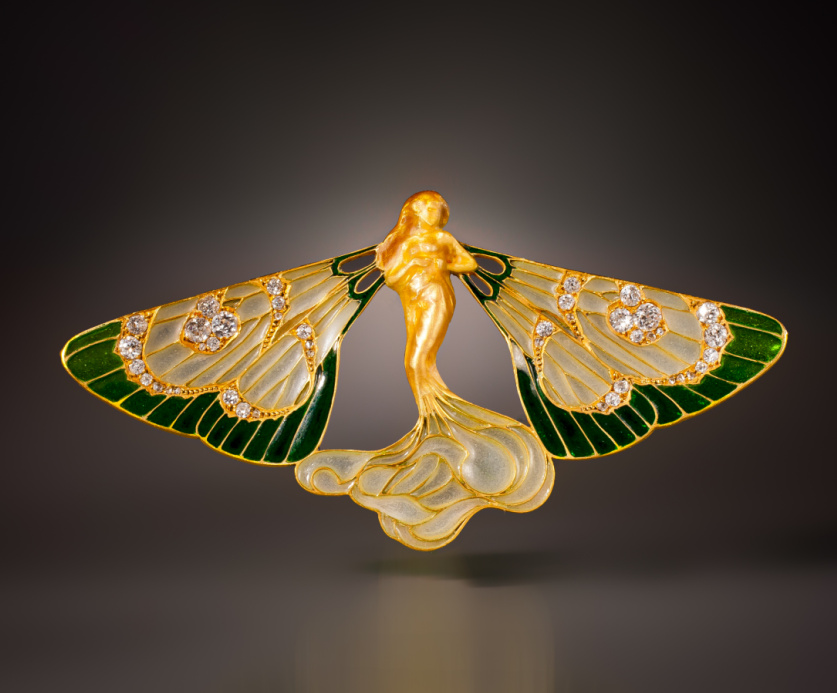
Gold, enamel, diamonds
From the collection of Epoque Fine Jewels
Bold Retro Style Quite Popular
Besides Art Nouveau, Retro Style jewelry popular in the latter half of the 20th century is also well-received at the exhibition. You can see Cartier’s classic panther and wide Buff bracelets created in the 1940s.
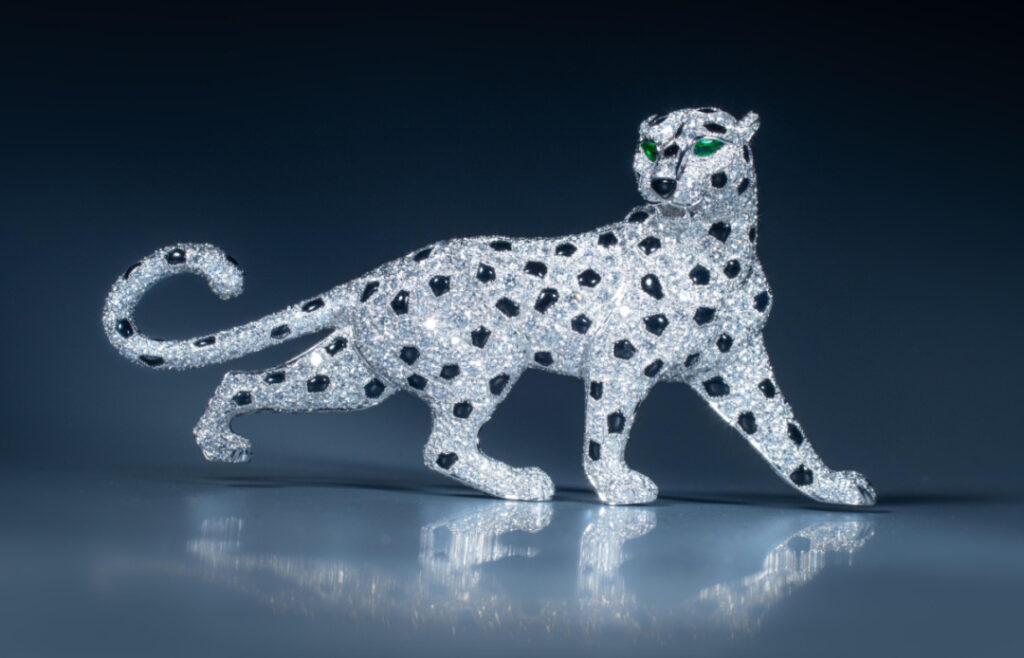
From the collection of Epoque Fine Jewels
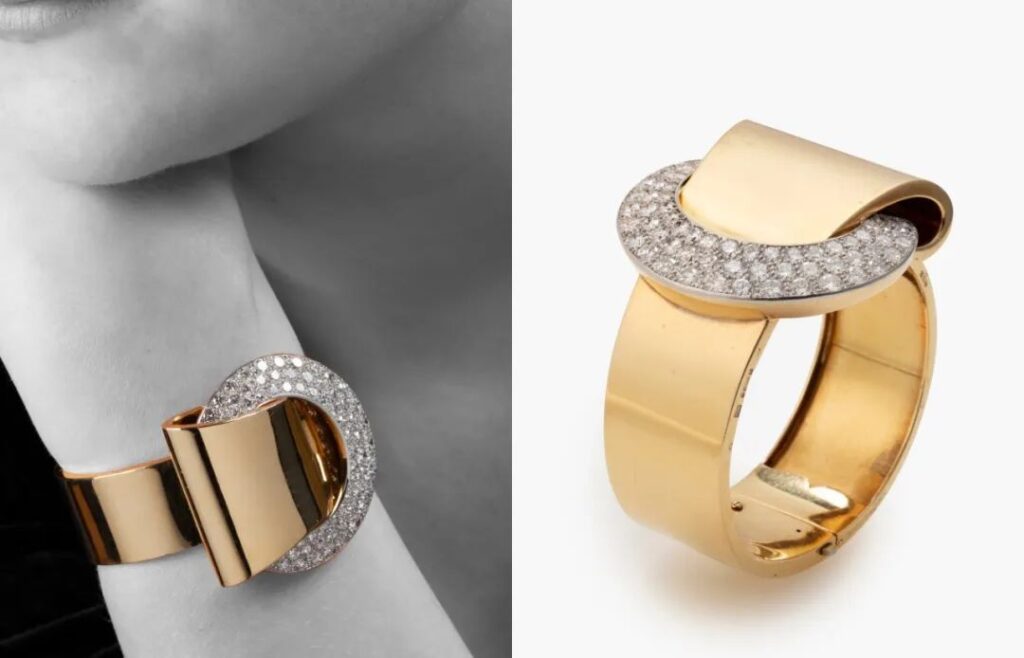
From the collection of Marjan Sterk Fine Art Jeweller
Van Cleef & Arpels, which had a significant voice during this period, has brought 5 pieces from their “Heritage Collection”, all from the 1940s-1960s, featuring the brand’s most representative craftsmanship and distinctive design style of that time.
For instance, the Leaf brooch introduced in 1943, with its gold shimmering with star-set diamonds – doesn’t it remind you of Van Cleef & Arpels’ classic Ludo bracelet? Moreover, its leaf veins, rendered in gold creases, reflect the sparkle of gemstones through the smooth metal surface.
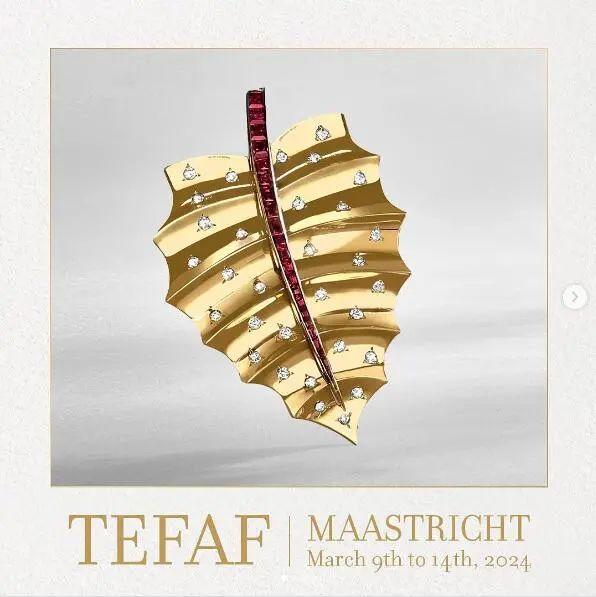
The Leaf brooch created in 1947 uses rubies to form the central leaf vein, with diamonds of various sizes and shapes paved for the leaf blade. This actually represents a return to naturalism after World War II, depicting the beauty of frost crystallizing on autumn leaves in early winter, aiming to celebrate the miracle of the world’s reconstruction and return to beauty after the war ended.

Van Cleef & Arpels also presents a bracelet from 1968, with boldness as its key feature: large-volume gemstones, vibrant combination of amethyst and turquoise, and energetic gold twists, all showcasing the generosity and prosperity of society at that time. Jewelry from this period was meant to be worn from day to night.
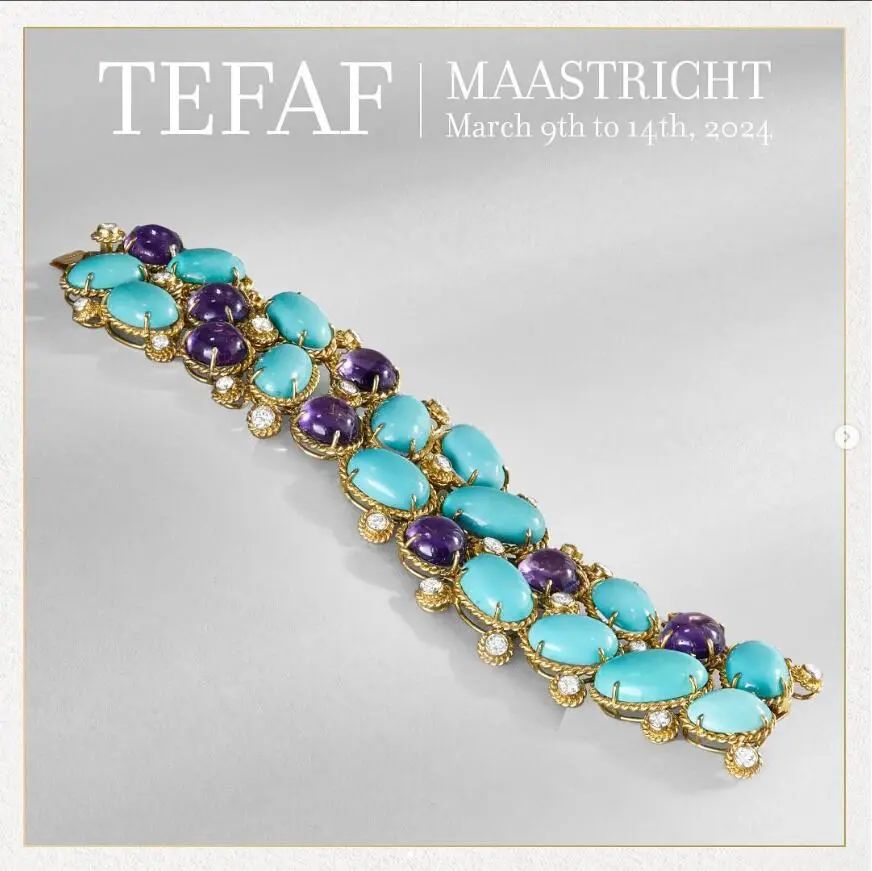
True Antique Jewelry: Art That Transcends Time
TEFAF’s focus is on antiques and art, and several pieces of genuine antique jewelry achieve a dual combination of antiquity and artistry.
For instance, the Alma Tadema gold snake armlet displayed by London antique expert Wartski is a wedding gift from the famous Dutch artist Sir Lawrence Alma-Tadema to his wife Laura Epps. This piece was created between 1871 and 1874, commissioned by the artist from JS and AB Wyon, the chief engravers to the Dutch royal family.

1871-1874
From the collection of Wartski
The armlet’s design is inspired by ancient Greek style, featuring a snake with protective significance that coils around the arm four times, with the wife’s name engraved in Greek letters. Interestingly, this armlet later appeared in several of the artist’s iconic paintings, including “The Sculpture Gallery” (1874) in the Hood Museum of Art collection, and “The Roses of Heliogabalus” (1888) owned by Spanish billionaire Juan Antonio Pérez Simón.
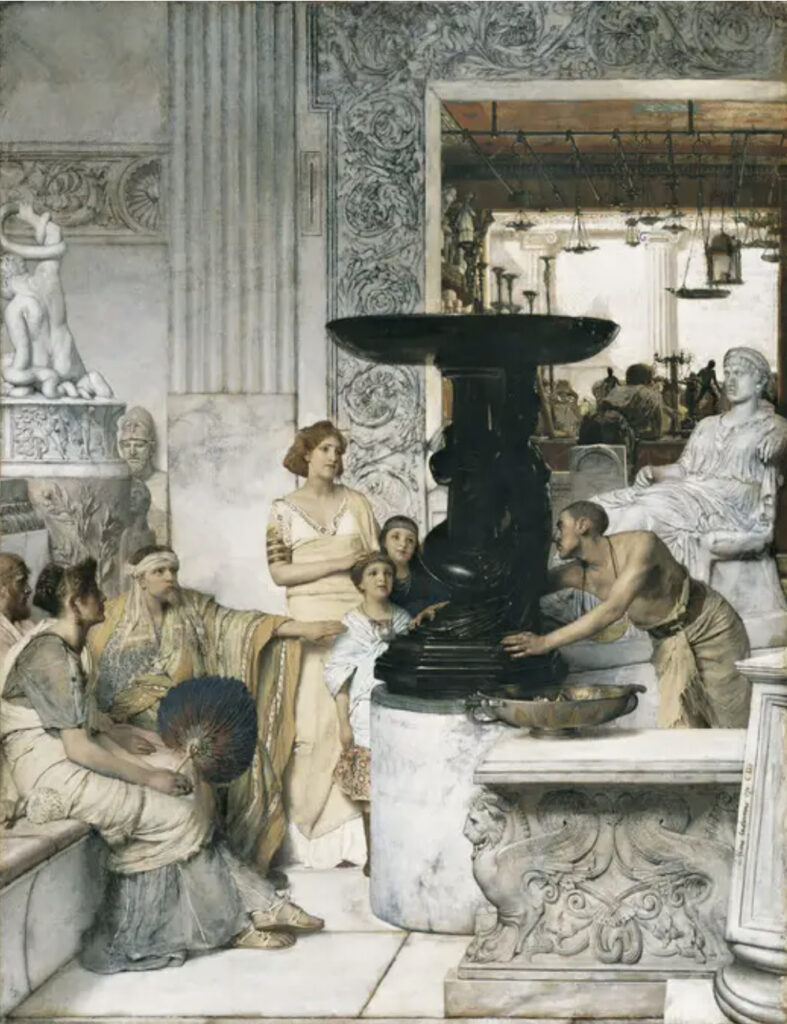
1874
The woman in the painting wears this Alma Tadema armlet
From the Hood Museum of Art
Galerie Chenel primarily focuses on various sculptural works, with their spacious booth filled with eye-catching busts and pedestal sculptures. However, hidden in the back corner is something extraordinarily special – an exquisitely carved Roman cameo from around 37 AD, depicting Augustus’s adopted son Agrippa Postumus. Made of brown and white sardonyx, it perfectly captures his youthful essence.
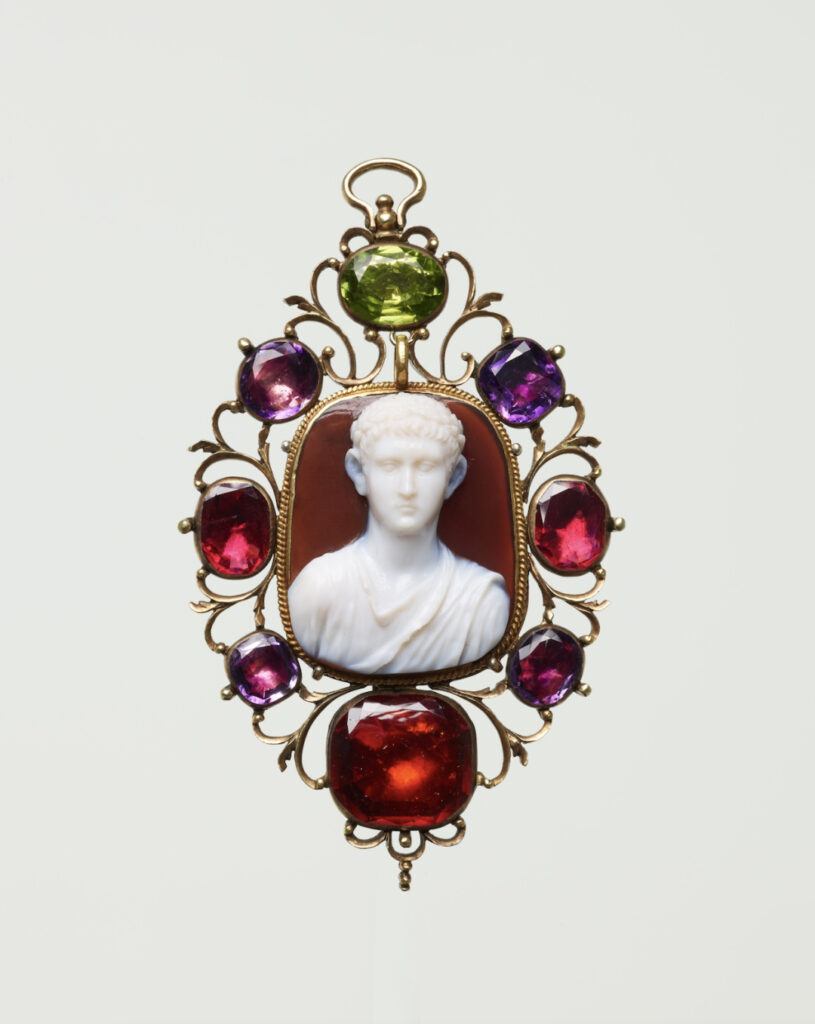
Around 1765, this cameo was collected by the Duke of Marlborough – one of England’s renowned collections of ancient and modern gems.
The semi-precious stones surrounding this cameo were actually added in the 18th century. Presumably, during that era when the archaeological revival style was popular, this piece, originally collected as a sculpture, was re-mounted by its owner, given new life, and became a wearable pendant. Today, this perfect combination of antique and art is estimated to be worth over $1 million.
Giving new life to antiques isn’t just the patent of archaeological revival masters; contemporary jewelry designers are also adept at this. For example, Maison Auclert, founded by Marc Auclert, specializes in contemporary mounting of antique artifacts such as cameos and intaglios.
This time they’ve brought the “Diana” brooch. Don’t misunderstand – the Diana here isn’t Princess Diana, but refers to the Greek goddess of hunting, Artemis (known as Diana to the Romans).
The main body of the brooch comes from a fragment of a Hellenistic Greek agate intaglio from the 3rd century BC, depicting the goddess Diana. Maison Auclert filled the lower half of the intaglio with gold and completed the goddess figure in a modern style, turning it into a versatile piece of jewelry that can be worn as both a brooch and a pendant.
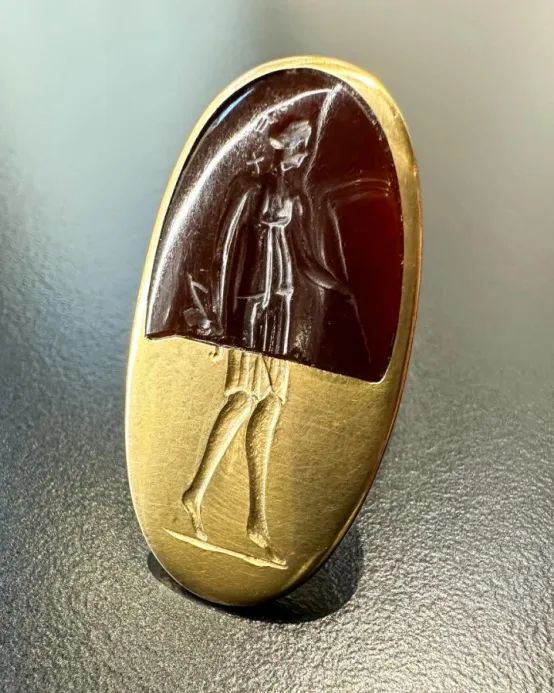
Diane Brooch
Gold, 3rd century BC agate intaglio
Another piece, the Camée Théâtre ring, also uses an ancient Roman cameo as the main stone. This is a rare sardonyx with alternating brown and blue-grey colors. Maison Auclert created a lavish sapphire border for it, giving it new life.
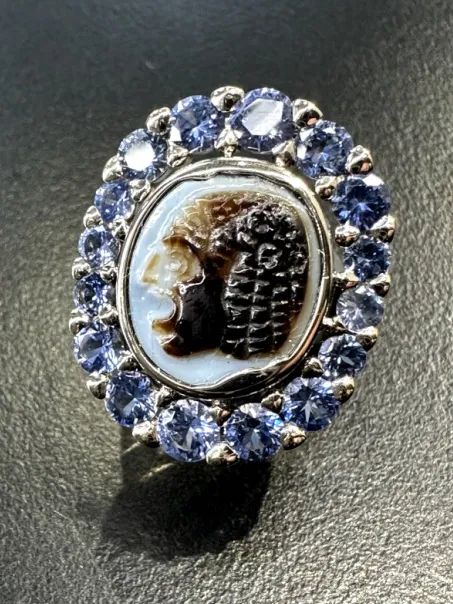
Camée Théâtre Ring
Gold, Roman-era sardonyx cameo, sapphires
One piece at this TEFAF exhibition that will surely leave a deep impression is the work of master goldsmith Loren Teetelli. Inspired by ancient Viking warships, she handcrafted a Viking longship using 22K yellow gold and crystal. This miniature warship can be disassembled into over 30 components and combined into multiple pieces of jewelry.
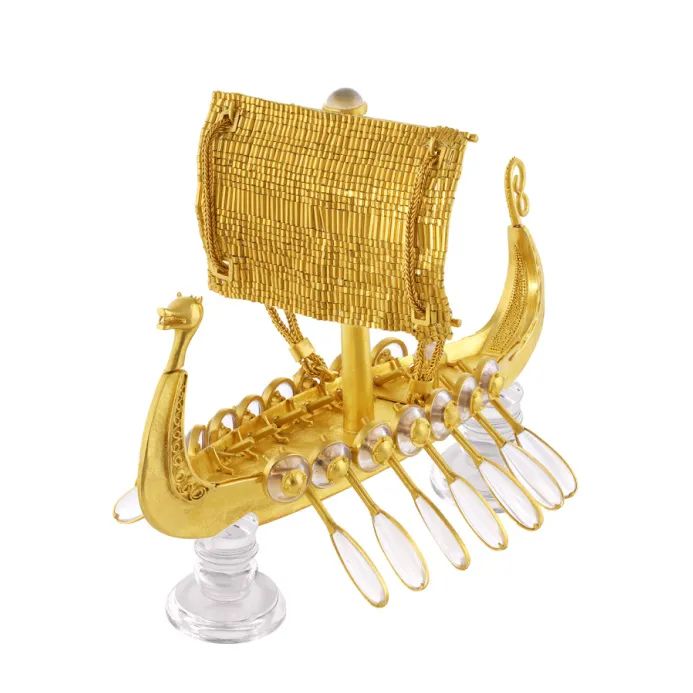
Viking Longship
22K gold, crystal
The sail can become a bracelet, the shields can transform into earrings, and together with the oars, they can form a necklace, while the dragon masthead can be worn as a brooch. The entire ship took 2 years and over 1,000 hours to create, showcasing various gold-working techniques including engraving, repoussé, granulation, chain-making, and filigree.
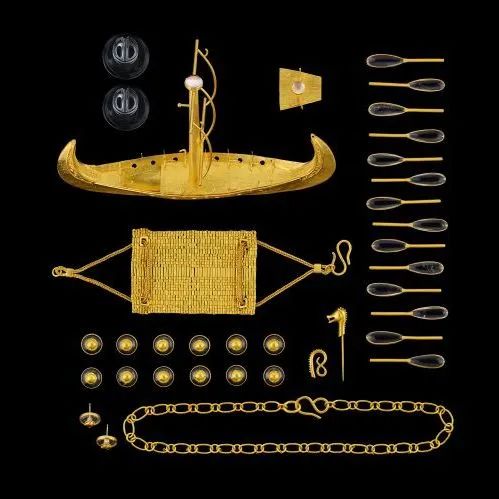

Viking Longship
22K gold, crystal
German jewelry brand Hemmerle is also known for incorporating antique elements into their jewelry creations. This year, they’ve brought a pendant necklace centered around a red chalcedony intaglio. The design is simple yet sophisticated. At first glance, the chain appears to be an ordinary rope, but it’s actually crafted from copper, red gold, and white gold, cleverly supporting the intaglio and presenting a beauty that returns to simplicity.

Copper, white gold, red gold, red chalcedony
TEFAF is also a stage for many high-end niche jewelry brands to release new products. Most of these brands possess unique techniques or are artistic masters with distinctive styles, creating works that stand apart from others. For instance, Boghossian, well-known for their gem-setting craftsmanship, has brought several new pieces this time, consistently showcasing their virtuosity with exceptional gemstones.
One example is a pair of floral earrings set with pear-shaped Type IIa diamonds, each over 5 carats. Using minimal metal, the petals and stems are all diamonds, making the entire flower appear as if carved from diamonds.
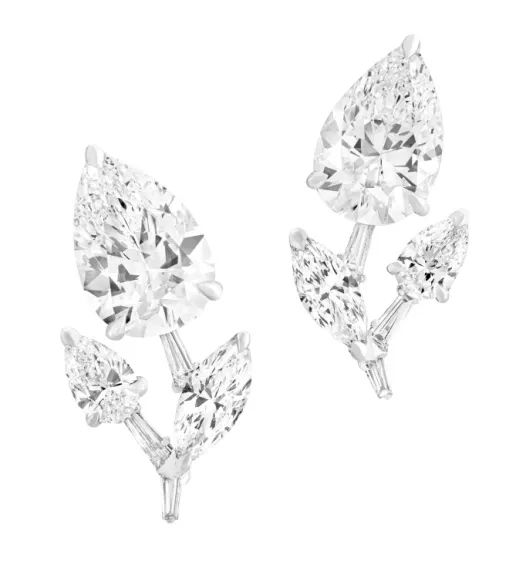
There’s also a lozenge-shaped ring with a vivid yellow marquise-cut diamond at its center, surrounded by colorless diamonds. Interestingly, while Boghossian’s signature Kissing setting is known for layering two types of gemstones with minimal metal, this ring takes the opposite approach. Although still using the layered gem setting, it frames the yellow and colorless diamonds with yellow gold and mother-of-pearl respectively.
It’s reasonable to speculate that this design choice was made to highlight the brilliant color of the yellow diamond, which rivals and even outshines the color of the gold.
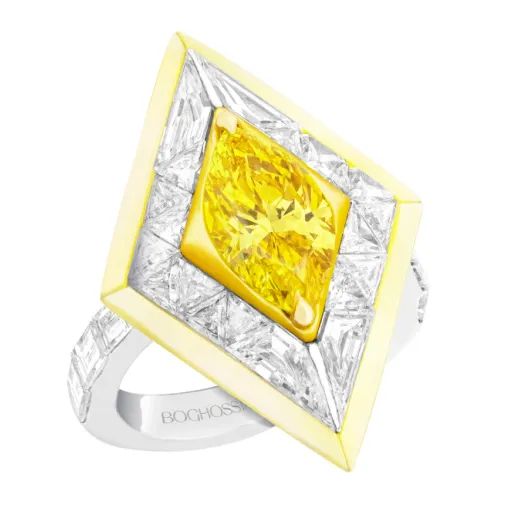
Yellow gold, white gold, diamonds, mother-of-pearl
Another piece is a pair of Kissing earrings featuring Paraiba tourmalines and diamonds. The neon-like fluorescent blue color is directly set into transparent diamonds, making all the gemstones appear to float in mid-air, maximally showcasing the brand’s gem-cutting, polishing, and setting techniques.

Diamonds, Paraiba tourmalines
Hemmerle is another well-known jewelry brand. This German family brand is adept at using high-quality gemstones, unique metals, artworks, and minerals to create artistic pieces. They’ve also released new works at TEFAF this time.
Nature continues to be a consistent theme in Hemmerle’s creations, but their depiction methods have become more modern. They range from highly realistic representations to contrasts between abstract and concrete, and even minimalist delineations using points, lines, and planes.

All of Hemmerle’s works feature unique metals paired with different gemstones. Hemmerle is particularly skilled at crafting copper and iron, materials rarely seen in jewelry, into desired shapes. They also blend aluminum and gold to achieve specific hues. In their hands, these metals undergo countless transformations, effortlessly complementing the centerpiece stone in each jewel.
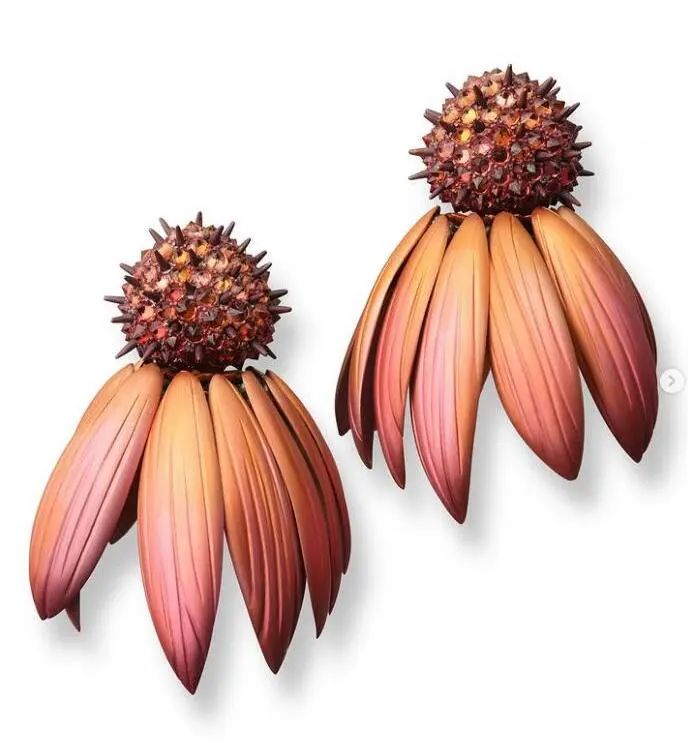
Copper, white gold, aluminum, sapphires

Aluminum, white gold, emeralds
Hemmerle moves effortlessly between abstract and concrete designs, with each piece presenting the most appropriate effect. This could be a figurative shape or a lifelike texture, achieving contrast, collision, and balance through subtle changes in lines and tones.

Bronze, white gold, emeralds
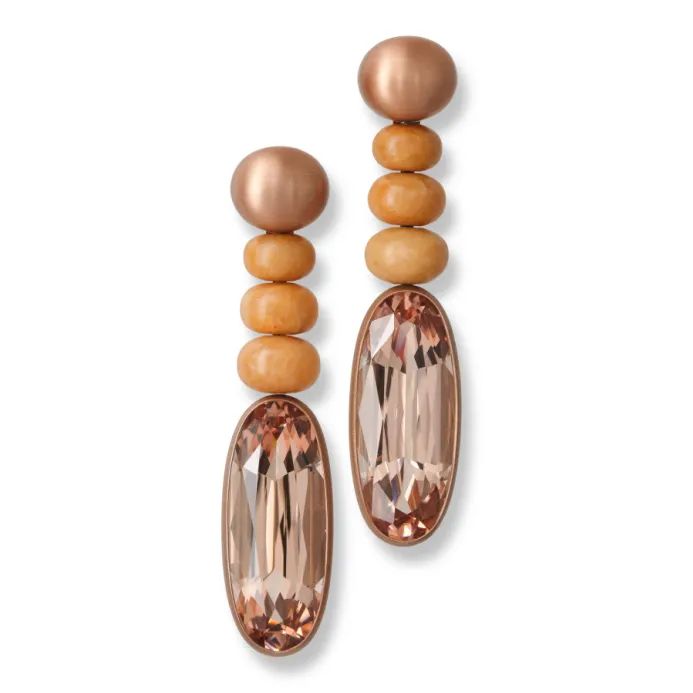
Aluminum, white gold, morganite, jade
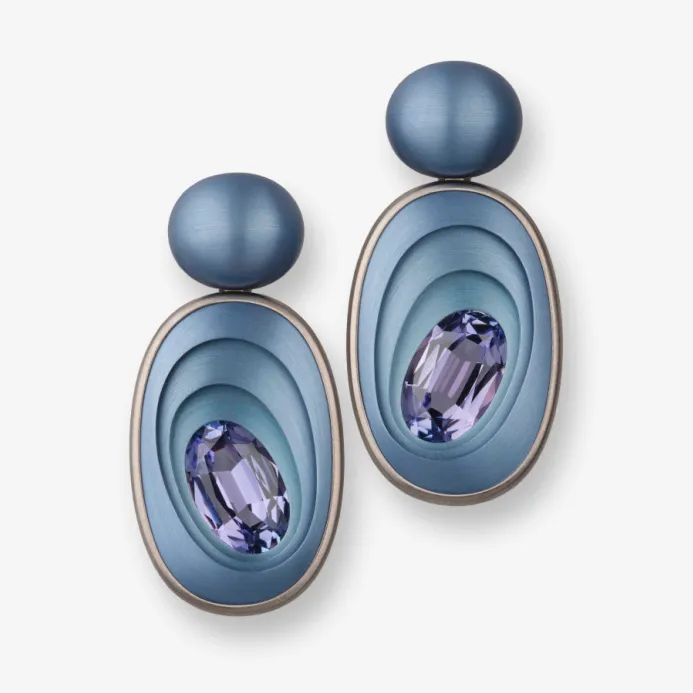
Aluminum, white gold, tanzanite
This year, German goldsmith Otto Jakob also returned to TEFAF Maastricht to showcase his new creations. He likes to blend ancient to medieval craftsmanship and themes with his contemporary works, employing unique and ancient goldsmithing techniques.
For example, the Huon ring features a rare cornflower blue sapphire and four cabochon rubies, forming a flower set in yellow gold and oxidized white gold. It uses an ancient closed setting to enhance the reflection of the gemstones.

The Prix I ring was originally planned for release at TEFAF New York in May, but due to collector interest, it made an early appearance at TEFAF Maastricht. This piece is inspired by “biological aesthetics, evoking skeletal imagery,” with details on the back inspired by traditional Maori woodcarving. It’s entirely cast using the lost-wax technique, with a unique surface texture created on the white gold. The centerpiece is a custom-cut octagonal yellow-brown diamond, adding an “ancient treasure” feel.
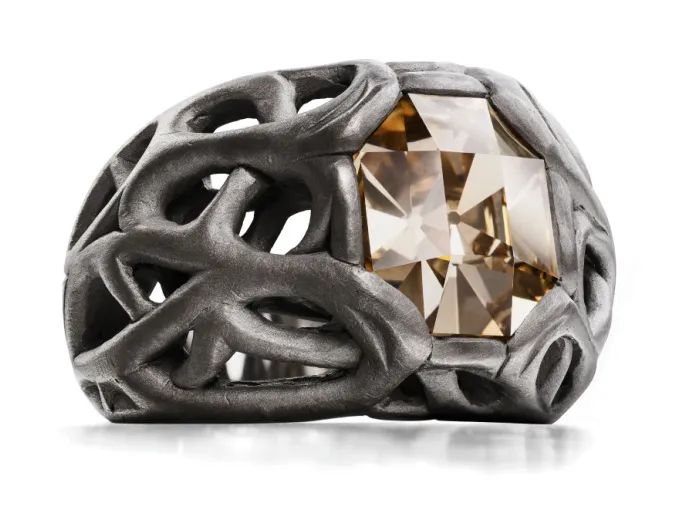
Prix I Ring
Chinese jewelry designer Anna Hu blends Eastern and Western elements, showcasing 10 new pieces at this TEFAF, including her signature butterflies, along with more animals and plants. For instance, the “Dunhuang Dance” brooch pays homage to the host country, the Netherlands, depicting a jewel-encrusted tulip.
Its petals are formed by two natural pearls (112.32 carats and 37.51 carats) resembling tulip buds, with one side of the pearls paved with fancy-cut diamonds, yellow diamonds, pink diamonds, and sapphires. The stem and leaves are made of green titanium, perfectly capturing the tulip’s vibrancy.
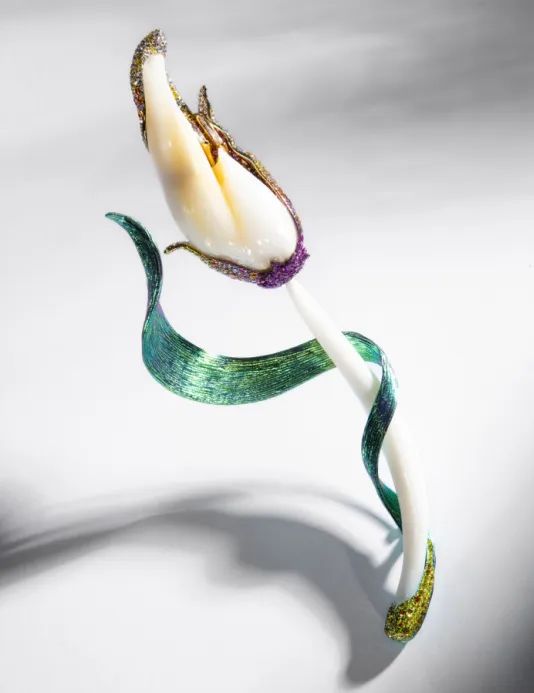

‘Dunhuang Dance’ High Jewelry Brooch
Titanium, natural clam pearls, diamonds, sapphires
Forms, a Hong Kong jeweler, represents a modern approach, with new works focusing heavily on the shapes of jewelry and gemstones. The Origami Fan earrings each feature a triangular diamond. To highlight the main stone’s shape, the earrings’ main body is also triangular, with diamonds set on brown aluminum plates in radiating folded lines to add depth and dimensionality.
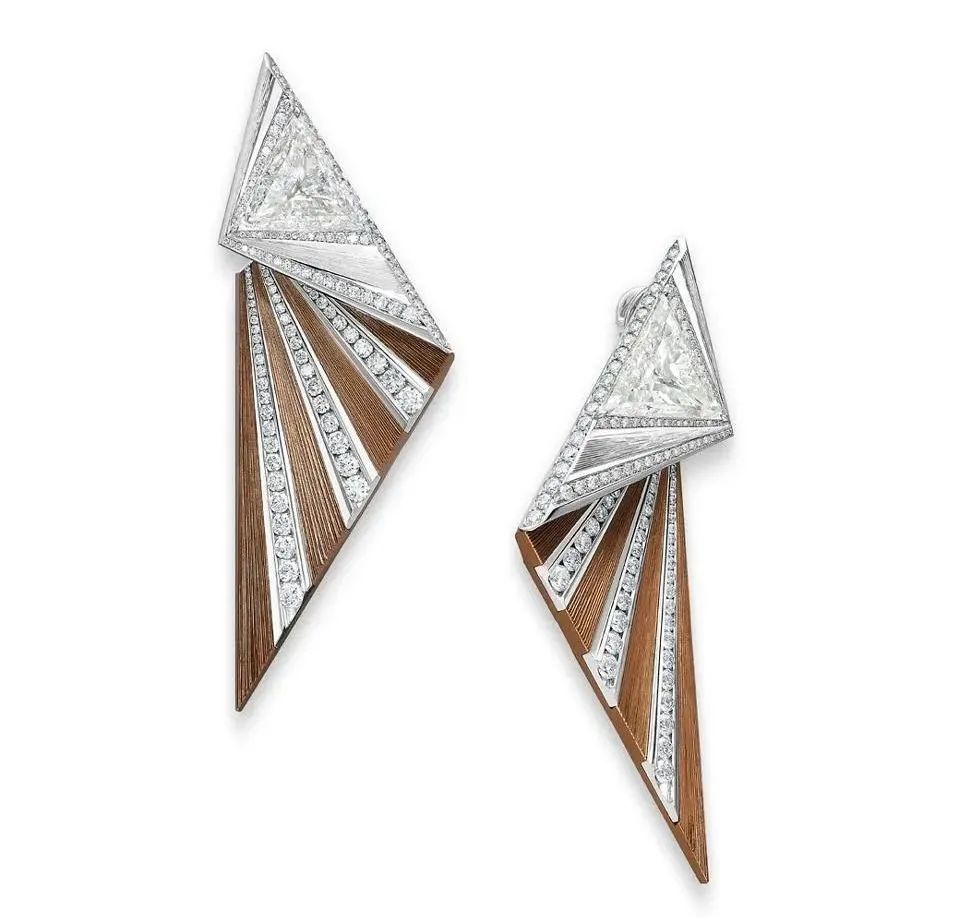
Origami Fan Earrings
Another piece is an emerald ring featuring a rare 8.04-carat Colombian emerald with no oil treatment. To accentuate the main stone, they framed it with a brilliant diamond border, outlining an octagonal emerald-cut profile. This design both highlights the emerald’s green color and emphasizes the unique silhouette of the emerald cut.
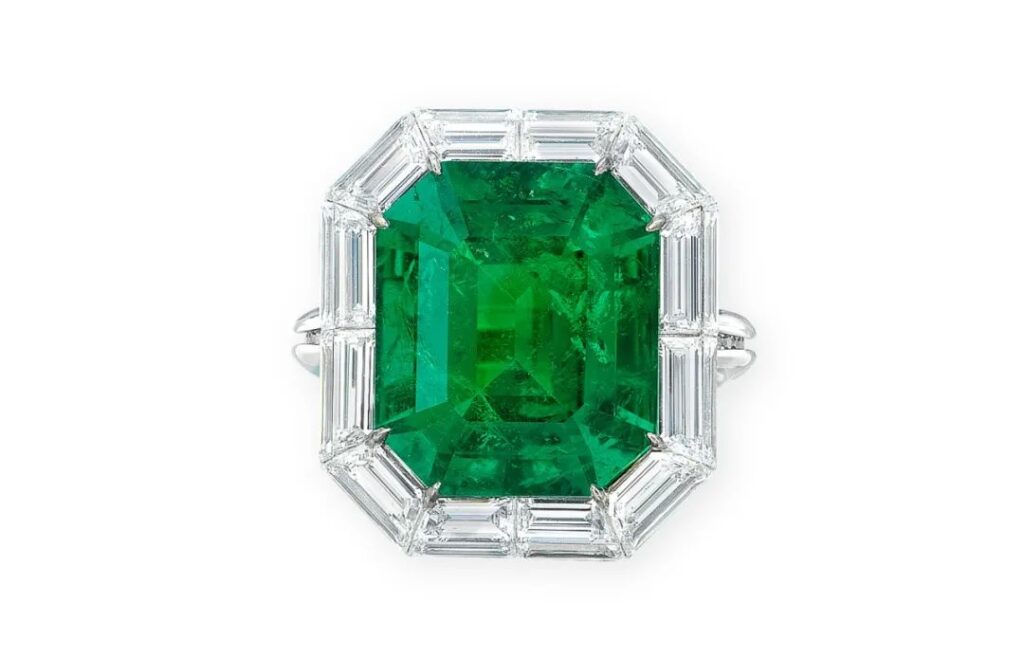
Set with an 8.04-carat Colombian emerald
So, how exciting was this TEFAF Maastricht exhibition? Whether antiques or jewelry, paintings or sculptures, they all possess a common artistic beauty. This is perhaps the unique charm of jewelry – unlike other luxury items such as dresses or bags, its beauty can endure for a long time. Even centuries cannot dim its brilliance; instead, it radiates a beauty that transcends time, embodying human artistry.
TEFAF 2024: A Treasure Trove of Rarities for Serious Jewelry Collectors
Tweet

